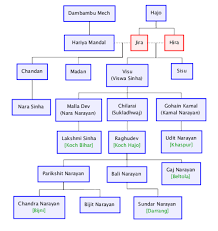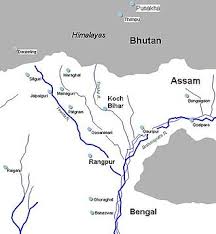Jitendra Narayan (1913-1922): (The Koch Kingdom Part 6)
Jitendra Narayan was the second son of Nripendra Narayan and Suniti Devi of Cooch Behar and was known as Kumar Victor. In 1900 he left for England and got admitted to Eton School. After finishing his studies there, he took admission in Edinburg University. He returned to Cooch Behar after completion of his studies. Since Raj Rajendra Narayan passed away leaving back no descendant of his own, Jitendra Narayan ascended to the throne of Cooch Behar in 1913.
After being crowned-in Jitendra Narayan with utmost skill started administering his state. He took firm steps for the development of the state. The reign of Jitendra Narayan was remarkable for more than one reason. During his reign the First World War took place in which the British government became involved. Jitendra Narayan also extended his helping hand to the government by sending his younger brother Hitendra Narayan in the war.
Besides it was during his reign the Non-Cooperation movement was gaining ground at the national level. In Cooch Behar few symptoms of the movement were observed from the British districts of Rangpur and Goalpara. Jitendra Narayan died in 20th December, 1922 in London leaving two sons and three daughters.
Jagaddipendra Narayan (1922-1949): After the death of Jitendra Narayan his son Jagaddipendra Narayan succeeded to the throne of Cooch Behar and the succession was duly recognized by the Government of India. The Government of India recognized the state council to form a Council of Regency for the administration during the minority of Jagaddipendra Narayan.

Maharani Indira Devi was the Regent for fourteen years (1922-36). During the Regency the State witnessed the civil disobedience movement in British India. But the movement did not have much influence in the state as it was suppressed by the state. Due to the economic burden on the peasants a few peasant revolts broke out in the state and they were organized under the leadership of Thakur Panchanan Barmah.
However the unrest did not take a full form. In 1936 Jagaddipendra Narayan attained majority and he was formally handed over the administration of the state by the Governor Anderson on the 6th April, 1936. During his reign the impact of the Quit India movement of 1942 was deeply felt in the state. Though attempts were made to check the growth of the movement, it made deep impression on the people. During his rule a party known as “Hitasadhani” gained power. Patrons of that party wanted Cooch Behar to be centrally administered state. Most of the subjects of the land supported that party. Leaders of that party visited Jawaharlal Nehru, Sardar Patel and others at Delhi and expressed their demand and aspirations before them.
In a public gathering at Calcutta, the then Indian Prime Minister Jawaharlal Nehru declared that the fate of Cooch Behar would be decided upon the public vote of that state. Indian Dominion attained independence in 1947. On 20th August 1948 Jagaddipendra Narayan in an agreement merged the state with the Dominion Government of India. Thereafter Cooch Behar was transformed into Centrally Administered State. Jagaddipendra Narayan obtained annual amount of eight lakhs & fifty thousand as his Privy Purse.
At last on 1st January, 1950 Cooch Behar was incorporated within West Bengal, state of the Indian Dominion. Jagaddipendra Narayan was left as a stateless King. Thus five century old kingdom came to an end and the royal sovereignty of Cooch Behar got replaced by Democracy.
So from the above story it is evidently clear to us that the political journey of the Koch kingdom and later the Cooch Behar State was full of events. The Koch kingdom emerged in mid-sixteenth century by ignoring the over-arching supremacy of the Mughol Empire. Up to the time of Lakshmi Narayan the entire North East India was under the Koch suzerainty. The able Koch rulers conquered one after another state by virtue of their political as well as military prowess. During this period the Mughol Emperor or its agents in Bengal neither poked into the matter of the Koch state nor did they take chance of any hostilities with the Koch Kingdom. It was not only a major incident in the political glory of the Koch kingdom but also a remarkable event to the entire princely community of contemporary times as the sovereignty of the kingdoms was in danger in view of the imperial attitude of the Mughol Empire.

But after the death of Lakshmi Narayan the politics of the kingdom became confined in a much smaller area as most of the subjugated kingdoms freed themselves from the Koch realm. The Koch kingdom gradually reduced its power in view of the weakening leadership. None of the remaining kings had much courage to retain or re-establish the old glory of the Koch kingdom. This gradual loss of power invited the British East India Company in the latter half of the eighteenth century to take advantage of the situation and under an agreement with the Koch authority submitted the sovereign power to the British authority. Thus the sovereign stature of the kingdom had gone and Koch kingdom emerged as a tributary state of the British Empire.
The succeeding history is a story of internal dissension and loss of political glory. The overarching British power almost seized all the powers of the state and puppet kings were placed in the throne of Koch state. Lastly the state joined with the union of India after independence of India and it became a district of Union of India by signing the merger agreement.
Sudip Narayan Ghosh
(End)